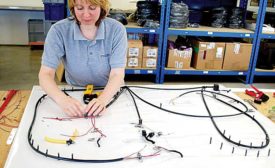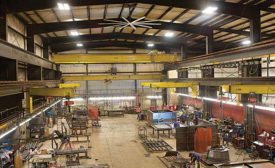Featured on Home Page
The Importance of Quality & Standards
Companies must measure quality in numerous ways at each phase of a product’s lifecycle.
May 1, 2017
Harness Failures: What’s to Blame?
When a wire harness fails, the testing system must be able to quickly pinpoint where and why it happened.
April 13, 2017
IPC-WHMA-A-620 Gets an Update
Five years after their last revision, IPC and WHMA have just published revision C of their popular A-620 standard for cable and wire harness assembly.
April 12, 2017
Options for Marking Wire and Cable
Lasers and continuous ink-jet printers create clear, long-lasting marks on wire and cable.
April 12, 2017
New Hinge Designs Enhance Product Performance
Today’s hinges offer sophisticated functionality that design engineers can use to improve the operation of their assemblies.
April 11, 2017
New Techniques for Joining Steel and Aluminum
Lightweighting is forcing automotive engineers to explore cutting-edge technology.
April 11, 2017
What’s New With Six-Axis Robots?
Today, collaboration is the name of the game.
April 10, 2017
Overhead Fans Won't Dispel Shielding Gases During Welding
With proper planning, welding facilities can have it all: overhead fans and strong welds.
April 10, 2017
Analyzing Bolted Joints for Clamp Load and Joint Stress
Bolts generate a lot of clamp load in a small area. That’s good for tight joints, but it can also create stress.
April 10, 2017
Never miss the latest news and trends driving the manufacturing industry
Stay in the know on the latest assembly trends.
JOIN TODAY!Copyright ©2024. All Rights Reserved BNP Media.
Design, CMS, Hosting & Web Development :: ePublishing












